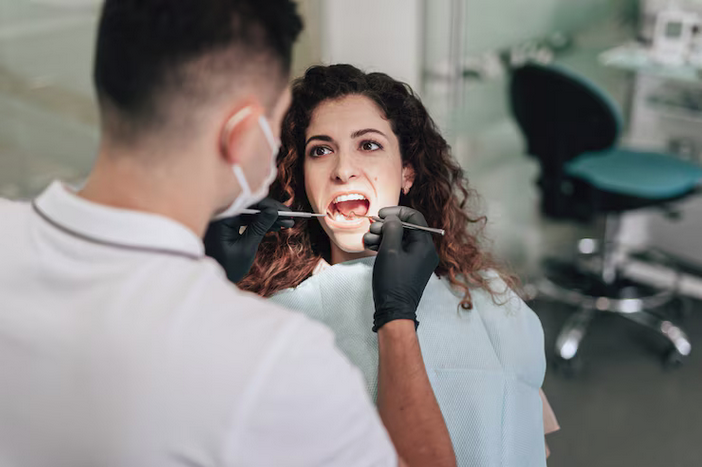In the realm of dental care, technological advancements continue to reshape and improve patient experiences. One such innovation that has made a significant impact is the introduction of same day crowns. This modern approach to dental restoration has revolutionized the way dental procedures are performed, offering a range of benefits that enhance convenience, efficiency, and overall patient satisfaction. For those who are unfamiliar with this technology, it represents a dramatic shift from traditional methods, which often involved multiple visits and extended waiting periods.
The Evolution of Dental Crowns
Traditionally, obtaining a dental crown required at least two separate visits to the dentist. The process began with the dentist preparing the tooth and taking impressions, which were then sent to a dental laboratory for the crown to be crafted. This process could take several weeks, during which the patient would need to wear a temporary crown. The second visit involved the placement of the permanent crown once it arrived from the lab. While effective, this method was time-consuming and often inconvenient for patients.
With the advent of same-day crown technology, the entire process has been streamlined. Using advanced imaging and milling technology, dentists can now complete the preparation, design, and placement of crowns in a single visit. This rapid turnaround is made possible by in-office CAD/CAM (Computer-Aided Design/Computer-Aided Manufacturing) systems, which enable precise and efficient crown creation.
How Same-Day Crowns Work
The process of receiving a same-day crown starts with the dentist taking digital impressions of the prepared tooth using a high-resolution intraoral scanner. This digital impression is highly accurate and eliminates the need for traditional, messy molds. The data collected is then used to create a 3D model of the tooth and the surrounding area.
Next, the dentist uses computer software to design the crown. This design process allows for precise customization, ensuring that the crown fits perfectly and matches the natural appearance of the surrounding teeth. Once the design is complete, the information is sent to an in-office milling machine that fabricates the crown from a block of ceramic or composite material. The milling process is rapid, typically taking less than an hour, and results in a high-quality, durable crown.
Once the crown is milled, the dentist checks the fit and makes any necessary adjustments. After confirming that the crown meets all requirements, it is permanently cemented onto the prepared tooth. The patient leaves the office with a fully functional and aesthetically pleasing crown, all completed in a single visit.
Benefits of Same-Day Crowns
The advantages of same-day crowns are numerous and impactful. Foremost among these is the convenience of completing the entire procedure in one visit. Patients no longer need to schedule multiple appointments or endure the inconvenience of temporary crowns. This streamlined process saves time and minimizes disruptions to daily life.
Another significant benefit is the enhanced accuracy and fit of the crowns. The use of digital impressions and advanced milling technology reduces the margin for error compared to traditional methods. This precision results in a better-fitting crown that requires fewer adjustments and provides a more comfortable experience for the patient.
Same-day crowns also offer aesthetic benefits. The ability to design and create crowns on-site allows for a higher degree of customization. Dentists can ensure that the crown matches the color, shape, and size of the surrounding teeth, leading to a more natural and seamless appearance. This is particularly important for crowns placed in visible areas, where aesthetics play a crucial role.
Additionally, same-day crowns contribute to improved overall oral health. By reducing the time a tooth is left with a temporary crown, patients experience less risk of complications such as sensitivity or gum irritation. The precision of same-day crowns also helps to preserve more of the natural tooth structure, as the need for extensive adjustments is minimized.
The Impact on Patient Experience
The introduction of same-day crowns has transformed the patient experience in several positive ways. The convenience of a single-visit procedure is a major advantage, particularly for those with busy schedules or those who find multiple dental visits challenging. The reduction in waiting time and the elimination of temporary crowns enhance patient comfort and satisfaction.
Moreover, the use of advanced technology in the creation of same-day crowns represents a significant leap forward in dental care. Patients benefit from the precision and customization offered by digital impressions and CAD/CAM technology, leading to better outcomes and a more personalized approach to dental restoration.
The immediate results of same-day crowns also contribute to a more positive patient experience. The ability to leave the dental office with a fully restored tooth provides a sense of accomplishment and satisfaction. This immediate gratification is a welcome change from the traditional process, which often involved weeks of waiting and the inconvenience of a temporary solution.
Conclusion
Same-day crowns have revolutionized the field of dental restoration by offering a more efficient, accurate, and patient-friendly alternative to traditional methods. The benefits of this technology are manifold, including the convenience of a single-visit procedure, enhanced accuracy and fit, improved aesthetics, and better overall oral health. By embracing advancements in technology and incorporating them into everyday practice, dental professionals are able to provide patients with a superior level of care and satisfaction.
For those considering dental crowns, the option of same-day crowns represents a significant improvement over traditional methods. The ability to receive a high-quality, custom-fit crown in just one visit not only saves time but also enhances the overall patient experience. As technology continues to advance, it is likely that we will see even further innovations in dental care, further improving the ways in which we address and manage dental restoration needs.





Comments